Key takeaways:
- Resolving community conflicts fosters belonging, safety, and innovation through dialogue, transforming disputes into collaboration.
- Strategies like safe spaces for open dialogue and neutral mediation are essential for constructive conflict resolution.
- Learning from past experiences and building trust among community members enhances future conflict navigation and solution implementation.
- Celebrating small wins and establishing strong partnerships sustain engagement and create impactful changes within the community.
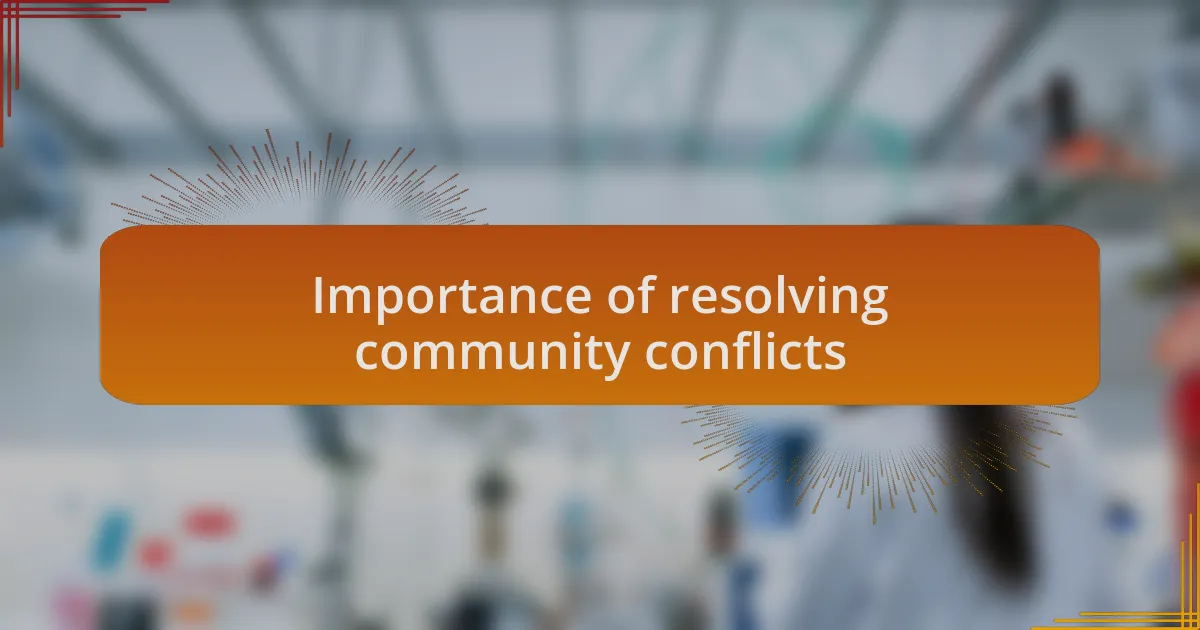
Importance of resolving community conflicts
Resolving community conflicts is essential for fostering a sense of belonging and safety among members. I remember a neighborhood dispute over a shared park that escalated quickly, with people taking sides. It struck me how the unresolved tension created an atmosphere of distrust; without resolution, the park became a symbol of division rather than a space for community joy.
Moreover, addressing these conflicts can lead to innovative solutions that benefit the entire community. I once participated in a mediation workshop where differing views on a local initiative were voiced and discussed openly. Seeing how those conversations transformed anger into collaboration made me realize that, when we engage in dialogue, we can often discover common ground and shared goals, enriching our community’s fabric.
On a deeper level, unresolved conflicts can have lasting emotional impacts on individuals, often leading to disengagement. I’ve felt the weight of ignored disputes in my own experiences; they drain energy and passion from activities that once brought joy. When we choose to actively resolve these issues, we not only heal rifts but also empower individuals to participate fully, fostering a vibrant, united community where everyone feels valued.

Strategies for addressing community disputes
One effective strategy I’ve found in addressing community disputes is creating a safe space for open dialogue. I remember initiating a community forum where residents could voice concerns about a local development project. The atmosphere was initially tense, but allowing each person to share their perspective gradually transformed the group dynamic. It made me realize that sometimes, just being heard can defuse anger and pave the way for constructive conversation.
Another approach is involving neutral mediators who can facilitate discussions without taking sides. In my experience, having a trained mediator during a particularly contentious meeting helped the participants focus on collaboration instead of conflict. This outside perspective can be crucial; it encourages participants to consider solutions that align with everyone’s interests rather than getting caught up in personal grievances. Isn’t it fascinating how a little bit of guidance can shift the entire conversation toward resolution?
Additionally, creating a community conflict resolution committee can empower members to address disputes proactively. I helped form one in my neighborhood, and it became a valuable resource for residents, offering workshops on conflict resolution skills and promoting healthy communication. This initiative not only equipped members with tools to manage disputes more effectively but also fostered relationships among residents, reinforcing the idea that we are stronger together. How do you think a similar approach could change the dynamics in your own community?
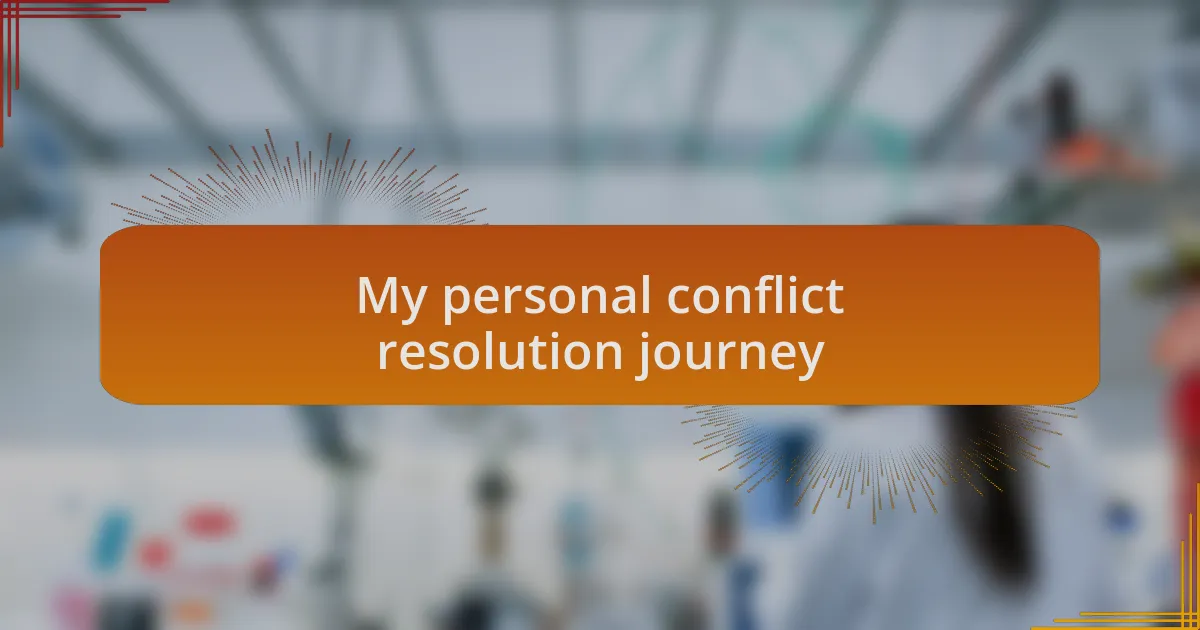
My personal conflict resolution journey
Navigating personal conflicts has been a deeply transformative journey for me. I recall a heated disagreement I had with a close friend over differing opinions on a community project. Instead of letting frustration take over, I chose to approach the situation with empathy. By inviting her for coffee and calmly discussing our viewpoints, I realized that her perspective was shaped by past experiences I hadn’t considered. This simple act of vulnerability opened a pathway to understanding that deepened our friendship.
During another experience, I found myself in a heated discussion within a community group where emotions ran high. I instinctively knew that shouting over each other wouldn’t lead to a resolution. With my heart racing, I suggested a break where each person could reflect. It was incredible how the energy shifted when we returned to the table, focused and ready to listen rather than to argue. Have you ever felt that relief when tension dissipates and respect returns to the conversation?
I also learned the value of sharing personal stories to bridge gaps in understanding. One time, I shared my journey of moving into the community and the challenges I faced, which sparked a wave of empathy among others who had similar experiences. Listening to their reactions, I realized how weaving personal narratives into discussions not only humanized our conflicts but also fostered connections that turned potential disputes into collaborative solutions. How often do we overlook the power of our own stories in resolving conflicts?
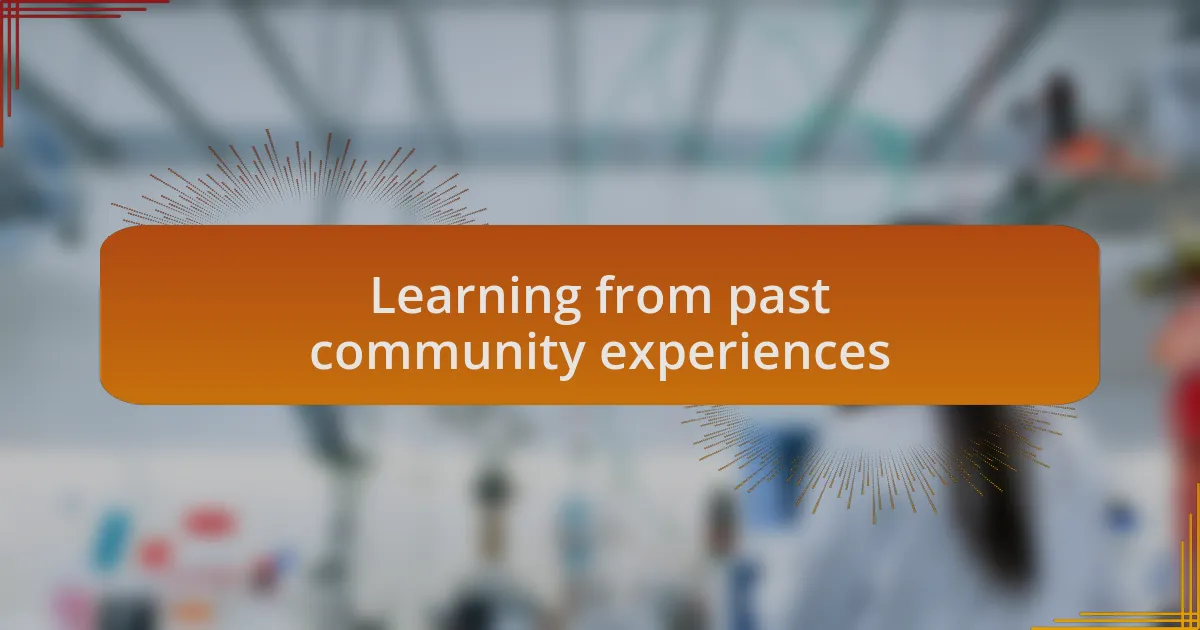
Learning from past community experiences
Reflecting on past community conflicts, I’ve come to realize how crucial it is to take lessons from each experience. I remember attending a neighborhood meeting where we grappled with conflicting views on a local development project. Some voiced passionate opposition, while others were excited about the prospects. Rather than jumping into defending my stance, I chose to step back and listen intently. This taught me that understanding the root of differing opinions often paves the way for more constructive dialogue.
There’s something profound about the wisdom that emerges from our collective histories. At a recent community event, I shared a past failure related to a similar project, which resonated deeply with others. The vulnerability in recounting that experience not only encouraged openness but also led to a group discussion where everyone felt safe to express their fears and hopes. When was the last time you encountered such openness in a community setting? I’ve found that these moments of shared honesty can turn tension into trust.
Moreover, drawing from the past allows us to navigate future conflicts with more insight. During a difficult mediation process, I recalled an earlier experience where my approach had faltered. This time, I consciously avoided making assumptions, choosing instead to seek clarity first. The result? A meaningful resolution that felt right for everyone involved. It underscores a simple truth: learning from the past can be our best guide in steering through present challenges. What can your past teach you about navigating conflicts today?
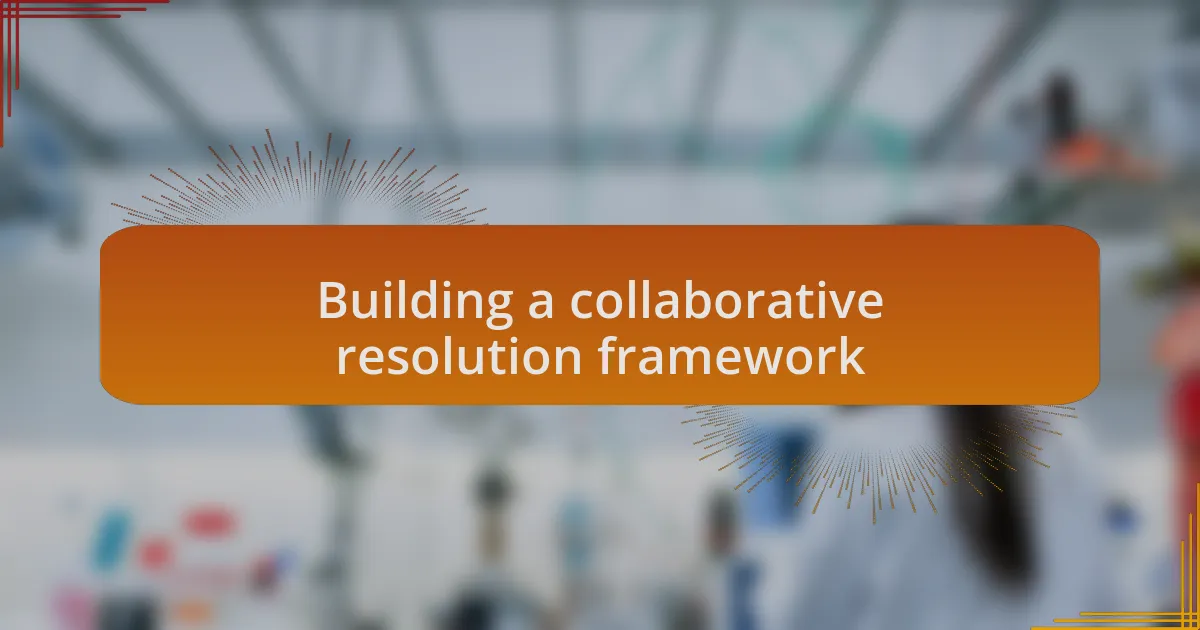
Building a collaborative resolution framework
Building a collaborative resolution framework begins with establishing trust among community members. I recall a time when our neighborhood faced a contentious debate over a park renovation. Instead of diving into a pro and con list, we organized a series of informal gatherings. Sharing stories over coffee transformed unfamiliar faces into allies. How often do we underestimate the power of casual interactions in fostering understanding?
In creating a framework, I’ve found it essential to outline clear communication channels. During one particular outreach, we developed a shared online platform where community members could voice concerns and offer solutions. Watching hesitant participants gradually engage in dialogue was rewarding. It sparked a realization: when people feel heard, they are more open to compromise. Isn’t it fascinating how transparency can bridge even the widest gaps?
Another key element has been the inclusion of diverse perspectives during the resolution process. I once facilitated a workshop that brought together youth, seniors, and local business owners to discuss community challenges. Initially, there were palpable tensions; however, as we encouraged each group to speak, empathy blossomed. The raw insights from different age groups enriched our discussions. How can we better include varied voices in our problem-solving endeavors? I’ve learned that diversity in input not only fosters creativity but also lays the groundwork for lasting solutions.
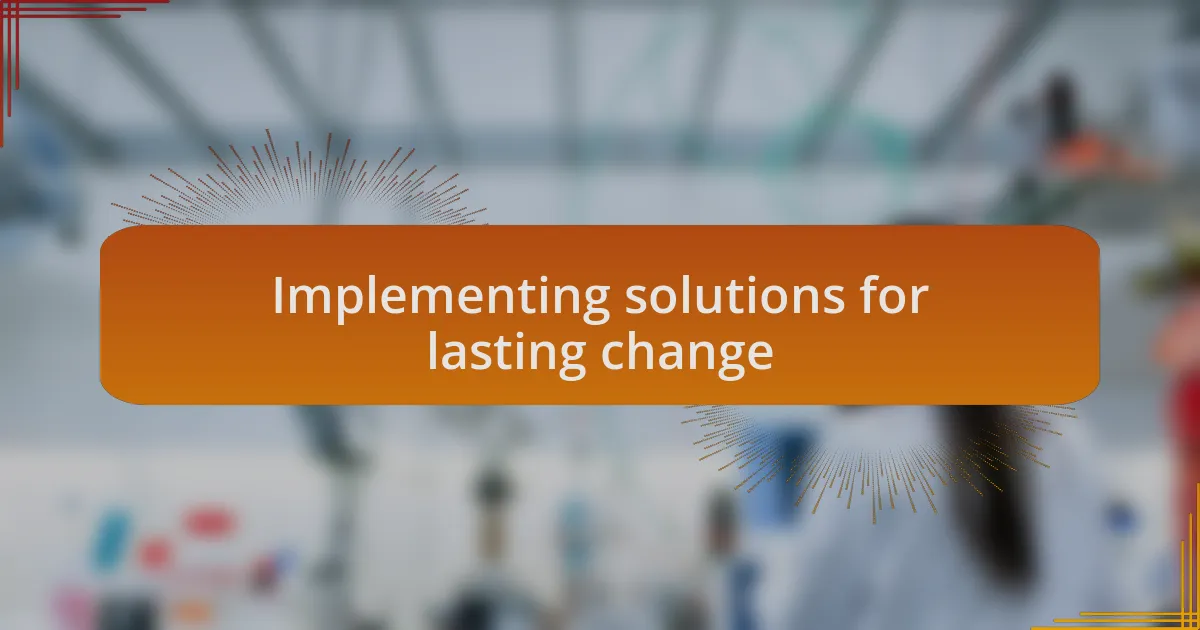
Implementing solutions for lasting change
Implementing solutions for lasting change requires a commitment to continuous engagement and follow-up. I remember a neighborhood initiative aimed at improving local safety, where we implemented community watch programs. Initially, excitement buzzed through the air, but as time passed, I noticed participants drifting away. It became clear that merely starting something wasn’t enough; we needed persistent check-ins to maintain enthusiasm and momentum. How often do we initiate impactful changes only to let them fizzle out?
Moreover, I’ve found that celebrating small wins can significantly bolster community spirit. One time, after we successfully organized a clean-up event, we hosted a potluck to recognize everyone’s efforts. The joy and sense of accomplishment transformed skepticism into hope. It made me realize that by honoring progress, no matter how minor, we can nurture a culture of sustained involvement. Isn’t it rewarding to witness how little actions can foster a shared vision?
Finally, strong partnerships are pivotal in implementing effective solutions. During a project aimed at improving local education, I partnered with a local library and schools. Together, we established a mentorship program that bridged gaps between students and community members. This collaboration not only amalgamated resources but also deepened trust. Have you considered how partnerships can expand the reach and impact of our initiatives? Embracing collaborative efforts doesn’t just strengthen our resolve; it cultivates a network of support that endures beyond individual projects.